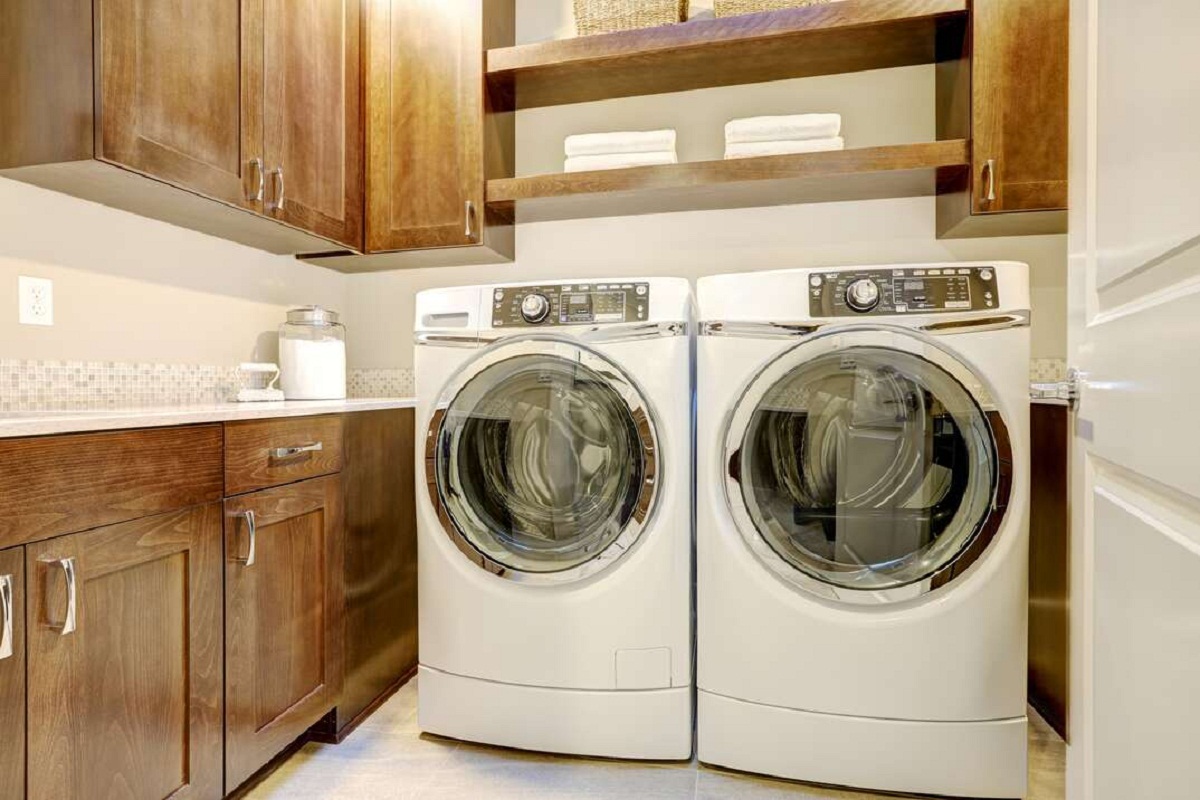

Articles
How Much To Add A Laundry Room
Modified: January 8, 2024
Discover articles on how much it costs to add a laundry room to your home. Explore tips, costs, and considerations for this valuable addition.
(Many of the links in this article redirect to a specific reviewed product. Your purchase of these products through affiliate links helps to generate commission for Storables.com, at no extra cost. Learn more)
Introduction
Adding a laundry room to your home can be a convenient and practical investment. It allows you to have a dedicated space for doing laundry, keeping your home organized, and saving time. Whether you are looking to convert an existing space into a laundry room or add an entirely new room to your home, there are several factors to consider before embarking on this project.
In this article, we will explore the key considerations involved in adding a laundry room to your home. From assessing space availability to estimating construction costs and selecting the right appliances, we will guide you through the process to help you make informed decisions.
Before diving into the details, it’s important to note that adding a laundry room may require obtaining permits and approvals from your local authorities, as well as hiring professional contractors to ensure the work is done correctly. It’s always a good idea to consult with professionals and adhere to building codes and regulations to avoid any potential issues.
So, let’s explore the factors to consider before adding a laundry room!
Key Takeaways:
- Planning and designing a laundry room involves assessing space, obtaining permits, estimating costs, and selecting appliances. Careful consideration and professional guidance can lead to a functional and valuable addition to your home.
- The decision to hire a contractor or pursue a DIY approach for adding a laundry room depends on expertise, time commitment, and project complexity. Both options offer advantages, so weigh them carefully before proceeding.
Read more: How To Add A Laundry Room
Factors to Consider Before Adding a Laundry Room
Adding a laundry room to your home is not a decision to be taken lightly. It involves careful planning and consideration of various factors. Here are some key factors you need to think about before starting your laundry room project:
- Available Space: Take a look at your home’s layout and determine if you have enough space to accommodate a laundry room. Consider available closets, unused areas, or even a spare room that can be repurposed for this purpose.
- Location: Choose a location that is convenient and accessible for your laundry needs. Opt for a spot that is close to the bedrooms or near the main living areas to minimize the effort of carrying laundry around the house.
- Plumbing and Electrical Requirements: Ensure that the chosen space has adequate access to plumbing and electrical connections. You may need to consult with a professional to determine if any modifications or upgrades are needed to accommodate the laundry appliances.
- Waterproofing: Consider the potential for water damage and ensure that the chosen location has proper waterproofing measures in place. This will help prevent any moisture-related issues in the future, such as mold or structural damage.
- Ventilation: Adequate ventilation is crucial to prevent humidity build-up and unpleasant odors in the laundry room. Ensure that there is proper ventilation, either through a window or a ventilation system, to keep the air fresh and prevent any potential health hazards.
- Storage Space: Think about your storage needs when planning the layout of your laundry room. Incorporate cabinets, shelves, or other storage solutions to keep laundry supplies, cleaning products, and other essentials organized and easily accessible.
- Budget: Determine your budget for the project, taking into account the cost of materials, labor, and any necessary renovations. It’s important to set a realistic budget to ensure that you can complete the project without any financial strain.
- Timeline: Consider the timeline for the project and assess how it will fit into your schedule. Adding a laundry room can be a significant undertaking, so plan accordingly and allow sufficient time for construction, inspections, and any unforeseen delays.
- Resale Value: While the primary purpose of adding a laundry room is to enhance your home’s functionality and convenience, it’s also important to consider the potential impact on your home’s resale value. A well-designed and thoughtfully executed laundry room can add value to your home and attract potential buyers in the future.
By carefully considering these factors, you’ll be better equipped to plan and design a laundry room that meets your needs and enhances your home’s overall functionality.
Assessing the Space Availability
Before embarking on the process of adding a laundry room to your home, it’s essential to assess the available space and determine if it can accommodate your needs. Here are some steps to help you assess the space availability:
- Measure the Space: Start by measuring the dimensions of the area where you plan to add the laundry room. Measure the length, width, and height of the space to get an accurate idea of the area you have to work with.
- Consider Existing Layout: Take into account the existing layout of your home and see how the laundry room can fit into it. Look for unused or underutilized spaces, such as a large closet, a corner of a basement, or even a mudroom that can be repurposed for laundry purposes.
- Assess Plumbing and Electrical Access: Check if the chosen space has easy access to plumbing and electrical connections. If the area is far from existing water or drainage lines, it may require additional plumbing work. Similarly, ensure that there are sufficient electrical outlets and consider if any upgrades or modifications are needed to accommodate the laundry appliances.
- Consider Proximity to Bedrooms: Ideally, the laundry room should be conveniently located near the bedrooms or in a central area of the house. This minimizes the effort required to transport dirty and clean laundry throughout the house.
- Close to Outdoor Access: If possible, consider locating the laundry room near an exterior wall or close to an outdoor access point. This makes it easier to vent the dryer and provides convenience for tasks like hanging clothes to dry.
- Evaluate Space Constraints: Consider any space constraints that may impact the functionality of the laundry room. For example, if the available space is small, you may need to opt for compact or stackable laundry appliances to maximize efficiency.
- Think Long-Term: When assessing the space availability, think about your long-term needs. If you expect your laundry needs to increase in the future, consider allocating a larger area or leaving room for expansion down the line.
- Consult with Professionals: If you’re unsure about the feasibility of adding a laundry room in your home or need expert advice, consult with professionals such as architects or contractors. They can assess your space and provide recommendations based on your specific requirements.
Assessing the space availability is a crucial step in planning your laundry room. By carefully considering the dimensions, layout, and accessibility of the space, you can ensure that your laundry room is functional, efficient, and seamlessly integrated into your home.
Obtaining Necessary Permits and Approvals
Adding a laundry room to your home typically requires obtaining permits and approvals from your local authorities to ensure compliance with building codes and regulations. Here are the steps you should take to obtain the necessary permits:
- Research Local Regulations: Start by researching the specific regulations and requirements set by your local municipality or jurisdiction. These regulations may vary, so it’s important to understand what permits are necessary for your specific project.
- Identify Permitting Authority: Determine which department or agency in your area is responsible for issuing building permits. This is usually the local building department, but it’s best to confirm this with your municipality.
- Submit Permit Application: Once you have identified the proper permitting authority, submit the required permit application. This may involve providing detailed plans, drawings, specifications, and other documentation related to your laundry room project.
- Paying Permit Fees: There are typically fees associated with obtaining permits. These fees vary depending on the scope of work and local regulations. Make sure to budget for these fees and pay them when submitting your application.
- Plan Review and Approval: After submitting your application, the permitting authority will review your plans and ensure they comply with building codes and regulations. They may request revisions or clarifications before approving the permit. This process can take some time, so be prepared for potential delays.
- Schedule Inspections: Once your permit is approved, you will need to schedule inspections at various stages of the construction process. These inspections ensure that the work is being done according to the approved plans and meet safety standards. Common inspections include plumbing, electrical, and final inspections.
- Final Approval and Certificate of Occupancy: Once the inspections are successfully completed and any necessary corrections are made, you will receive final approval and a Certificate of Occupancy. This certifies that your laundry room meets all requirements and is safe for use.
- Consequences of Non-Compliance: It’s important to note that failure to obtain the necessary permits and approvals can result in serious consequences, such as fines, legal issues, or difficulty in selling your home in the future. It’s always best to adhere to the regulations and obtain the proper permits to avoid any potential problems down the line.
Keep in mind that the process of obtaining permits can vary depending on your location and the complexity of your project. It’s recommended to consult with professionals, such as architects or contractors, who are familiar with local regulations and can guide you through the permitting process.
By following these steps and obtaining the necessary permits and approvals, you can ensure that your laundry room project is done legally and in compliance with building codes, providing peace of mind and ensuring the safety of your home.
Estimating Construction Costs
Estimating the construction costs involved in adding a laundry room to your home is an important step in planning your project and setting a realistic budget. While the actual costs can vary depending on factors such as location, size, and complexity of the project, here are some key aspects to consider when estimating the construction costs:
- Materials: Begin by determining the materials needed for the construction of the laundry room. This includes items such as framing materials, drywall, flooring, cabinetry, countertops, plumbing fixtures, and electrical components. Research local prices and calculate the approximate cost of these materials based on the desired quality and aesthetic appeal.
- Labor: Labor costs are a significant factor in construction projects. Depending on the complexity of the project and local labor rates, you may need to hire contractors for tasks such as plumbing, electrical work, drywall installation, and carpentry. Obtain multiple quotes from licensed and reputable professionals to estimate the labor costs involved.
- Permits and Fees: Don’t forget to include the costs associated with obtaining permits and paying the necessary fees. These costs can vary depending on your location and the scope of the project.
- Additional Plumbing and Electrical Work: If the chosen space does not have existing plumbing and electrical connections, additional work may be required. This can include extending water lines, installing new drains, and upgrading the electrical system. Consult with professionals to assess the extent of this work and factor in the associated costs.
- Fixtures and Appliances: Appliances such as washing machines, dryers, and utility sinks are essential components of a laundry room. Research the cost of these fixtures and factor them into your budget. Don’t forget to consider any additional features or upgrades you may want, such as energy-efficient models.
- Contingency: It’s always a good idea to set aside a contingency budget for unexpected expenses or unforeseen challenges that may arise during the construction process. A general rule of thumb is to allocate around 10-15% of your total project cost for contingencies.
Keep in mind that these estimates are general guidelines, and it’s always best to consult with professionals to get accurate cost estimates based on your specific project requirements and local market conditions. Consider obtaining multiple quotes and comparing them to ensure you are getting fair pricing.
By carefully estimating the construction costs, you’ll be able to plan your budget effectively and ensure you have the necessary funds to complete your laundry room project successfully.
Read more: How Much Does A Laundry Room Remodel Cost
Plumbing and Electrical Considerations
When adding a laundry room to your home, it’s important to carefully consider the plumbing and electrical requirements to ensure proper functionality and safety. Here are some key considerations for plumbing and electrical work:
Plumbing Considerations:
- Water Supply: Determine the source of water for your laundry appliances. If the chosen space is far from existing water lines, you may need to extend the water supply lines to accommodate the laundry appliances. Consult with a plumber to assess the feasibility and cost of this plumbing work.
- Drainage: Ensure that the laundry room has proper drainage to handle the wastewater generated by the washing machine. This may involve installing a floor drain or connecting the washing machine drain to an existing drain line. The slope of the drain pipe should be sufficient for effective waste removal.
- Ventilation: Plumbing codes require proper ventilation to prevent sewer gases from entering your home and to maintain a healthy environment. Install an appropriate ventilation system, such as a vent pipe, to ensure the proper functioning of the drainage system.
- Backflow Prevention: Consider installing a backflow prevention device to protect your home’s water supply from contamination. This device prevents the reversal of water flow, which can occur if there is a drop in water pressure or a backflow event in the municipal water supply.
- Hot Water Supply: Evaluate if your current hot water system can handle the additional demand from the laundry appliances. If necessary, consider upgrading the water heater or installing a dedicated instant hot water system for the laundry room.
Electrical Considerations:
- Power Supply: Assess the electrical system in your home to ensure it can handle the additional load from the laundry appliances. Consult with an electrician to determine if any upgrades or modifications are needed, such as installing additional circuits or increasing the capacity of the electrical panel.
- Outlet Locations: Determine the placement of electrical outlets based on the layout of your laundry room and the electrical requirements of the appliances. Ensure that there are sufficient outlets for the washing machine, dryer, and any other electrical equipment you may have, following local electrical codes.
- GFCI Protection: Install ground fault circuit interrupter (GFCI) outlets near sinks, laundry tubs, or any other water sources in the laundry room. GFCIs provide protection from electric shock by quickly shutting off the power when a ground fault is detected.
- Lighting: Plan adequate lighting for your laundry room to ensure proper visibility during laundry tasks. Consider installing a combination of ambient, task, and overhead lighting fixtures to create a well-lit and functional space.
It’s crucial to hire licensed professionals, such as plumbers and electricians, to handle the plumbing and electrical work in your laundry room. They have the expertise to ensure that the work is done safely, in compliance with local codes, and according to industry standards.
By considering these plumbing and electrical factors, you can create a functional and safe laundry room that meets all your needs and operates efficiently.
Selecting Laundry Appliances
Choosing the right laundry appliances is an essential part of creating a functional and efficient laundry room. With a wide range of options available in the market, here are some factors to consider when selecting your laundry appliances:
Read more: What Is A Laundry Room
Washing Machine:
- Capacity: Consider the size of your household and the amount of laundry you typically do. Look for a washing machine with a capacity that can accommodate your family’s needs. Larger capacities can handle more laundry in a single load, saving you time and energy.
- Energy Efficiency: Energy-efficient washing machines can help reduce water and energy consumption, leading to lower utility bills. Look for machines with high Energy Star ratings to ensure optimal efficiency.
- Washer Type: There are various types of washing machines available, including top-loaders, front-loaders, and compact washers. Consider the pros and cons of each type and choose the one that best suits your preferences and the available space in your laundry room.
- Features and Technology: Modern washing machines come with a range of features and technology to improve the laundry process. Some common features include various wash cycles, temperature settings, delay start options, and smart connectivity that allows you to control and monitor the machine remotely.
Dryer:
- Dryer Type: Like washing machines, dryers also come in different types, including vented dryers, condenser dryers, and heat pump dryers. Consider your ventilation options and choose a dryer type that best suits your needs and constraints.
- Capacity: Ensure that the dryer’s capacity matches the capacity of your washing machine. This allows you to dry a full load of laundry in one cycle, maximizing efficiency.
- Energy Efficiency: Look for energy-efficient dryers with high Energy Star ratings to reduce energy consumption and save money on your utility bills.
- Features and Technology: Similar to washing machines, dryers offer various features and technology to enhance functionality. These may include moisture sensors, wrinkle prevention options, different drying cycles, and smart connectivity.
Stackable or Side-by-Side:
- Space Considerations: If you have limited space in your laundry room, consider stackable washer and dryer units. These units are designed to be vertically stacked, saving valuable floor space. However, if space is not a constraint, side-by-side units offer convenience and ease of access.
- Installation: Stackable units require proper installation to ensure stability and safety. Ensure that the manufacturer’s guidelines are followed, or consult with a professional to ensure secure installation.
When selecting your laundry appliances, it’s important to assess your specific needs and preferences. Consider factors such as budget, available space, energy efficiency, and the desired features to find the appliances that best fit your requirements.
Lastly, don’t forget to measure the space in your laundry room to ensure that the appliances will fit comfortably and allow for proper ventilation and access to utilities. Consult with appliance experts or review online guides and reviews to make an informed decision.
By carefully selecting your laundry appliances, you can optimize the functionality and efficiency of your laundry room, making laundry tasks more convenient and enjoyable.
Designing the Layout and Storage
The layout and storage design of your laundry room play a crucial role in optimizing functionality, organization, and efficiency. Here are some tips to consider when designing the layout and storage for your laundry room:
Read more: How To Finish Laundry Room
Assess Available Space:
- Efficient Workflow: Consider the flow of tasks in your laundry room. Design the layout in a way that allows for an efficient workflow, from sorting and washing to drying and folding. Keep frequently used items within easy reach to minimize unnecessary movement.
- Clearance Space: Ensure there is enough clearance space around appliances, cabinets, and countertops to comfortably perform tasks and access controls and doors. Leave enough space for opening and closing doors and for loading and unloading laundry.
- Utility Placement: Place utility hooks or racks near the washing machine and dryer to hang items such as cleaning supplies, laundry bags, or brooms. This keeps them within reach yet organized and off the floor.
Storage Solutions:
- Cabinets and Shelves: Install overhead cabinets or open shelves to store detergent, fabric softener, and other laundry essentials. Choose cabinets or shelves that are durable, moisture-resistant, and easy to clean
- Countertop Space: Include a countertop next to the washer and dryer to provide a flat surface for sorting and folding laundry. Choose a countertop material that is stain-resistant and easy to maintain.
- Built-In Hampers: Consider adding built-in hampers or laundry baskets where dirty clothes can be sorted and stored. This helps keep the laundry room organized and prevents clothes from piling up on the floor.
- Pull-Out Ironing Board: If space permits, install a pull-out ironing board that can be easily folded and hidden when not in use. This saves space and provides a convenient spot for ironing garments.
Aesthetics and Lighting:
- Color Palette: Choose a color palette that complements the overall design of your home. Opt for light and neutral tones to create a clean and fresh look.
- Lighting: Adequate lighting is essential for a functional laundry room. Incorporate a combination of ambient, task, and overhead lighting to ensure a well-lit space. Consider installing under-cabinet lighting to illuminate the work surface.
- Decorative Elements: Add personal touches and decorative elements to make the laundry room feel inviting and pleasant. This could include artwork, wall decals, or plants to bring life to the space.
When designing the layout and storage of your laundry room, keep in mind the specific needs and preferences of your household. Tailor the design to accommodate your workflow and storage requirements, creating a space that is functional, organized, and visually appealing.
Consider consulting with a professional designer or utilizing online design tools to help visualize the layout and storage options. This will aid in creating a laundry room that maximizes efficiency and enhances your overall laundry experience.
Hiring a Contractor or DIY?
When it comes to adding a laundry room to your home, one of the decisions you will need to make is whether to hire a contractor or tackle the project yourself (DIY). Both options have their advantages and considerations to keep in mind:
Read more: How To Clean A Laundry Room
Hiring a Contractor:
- Expertise and Experience: Contractors have the knowledge, skills, and experience to handle various aspects of the project, including plumbing, electrical work, and construction. They are familiar with building codes and regulations, ensuring that the work is done correctly and safely.
- Saves Time and Effort: Hiring a contractor can save you a significant amount of time and effort. They will handle all the planning, coordination, and execution of the project, freeing you up to focus on other priorities.
- Access to Specialized Tools and Equipment: Contractors typically have access to specialized tools and equipment needed for the job. This ensures that the work is done efficiently and to a high standard.
- Insurance Coverage: Reputable contractors carry liability insurance, giving you peace of mind in case of any accidents or damages that may occur during the project. This protects you from potential financial liability.
- Guarantees and Warranties: Contractors often provide guarantees and warranties on their workmanship and the materials they use. This provides added protection and ensures that any issues or defects are addressed promptly.
DIY:
- Cost Savings: Taking on the project yourself can potentially save you money on labor costs. However, it’s important to consider your own skill level and the complexity of the project. If you’re not experienced in construction or plumbing/electrical work, the cost savings may be outweighed by the risk of errors or having to redo work.
- Flexibility and Control: DIY projects give you the flexibility to design and execute the project exactly as you envision it. You have complete control over every aspect, from the layout to the choice of materials and finishes.
- Learning Opportunity: Taking on a DIY project can be a great learning experience. It allows you to gain new skills and knowledge, and it can be rewarding to see the end result of your own hard work.
- Time and Commitment: DIY projects require a significant time investment, as you will need to dedicate your time to planning, researching, purchasing materials, and executing the work. Be prepared for potential delays and setbacks that may arise during the project.
- Permits and Building Codes: It’s important to familiarize yourself with the necessary permits and building codes for your area. DIY projects still need to adhere to these regulations, so be prepared to navigate the permitting process and ensure compliance.
Ultimately, the decision to hire a contractor or take on a DIY approach depends on your comfort level, skills, and the scope of the project. For complex projects or if you lack the necessary expertise, hiring a contractor is generally the safer and more efficient option. However, if you have the skills and time available, a DIY approach can be a fulfilling and cost-effective way to create your ideal laundry room.
Regardless of your choice, remember to consult with professionals, obtain necessary permits, and plan your project thoroughly to ensure a successful outcome.
Conclusion
Adding a laundry room to your home can greatly improve your daily life by providing a dedicated space for laundry tasks and organization. By considering the various factors discussed in this article, you can ensure that your laundry room project is successful and meets your needs.
Before starting the project, assess the available space and determine if it can accommodate a laundry room. Consider plumbing and electrical requirements, as well as any necessary permits and approvals. Estimating construction costs and selecting the right appliances are important steps in creating a functional and efficient laundry room.
When designing the layout and storage, create a space that promotes an efficient workflow and offers ample storage solutions. Consider the aesthetics and lighting to create a pleasant and visually appealing environment.
Deciding whether to hire a contractor or pursue a DIY approach is a personal decision that depends on various factors, including your skill level and the complexity of the project. Both options have their advantages, so carefully consider which one is best for you.
In conclusion, adding a laundry room to your home can make a significant difference in your daily routine and organization. By taking the time to plan and consider all aspects of the project, you can create a laundry room that is not only functional but also enhances the overall value and enjoyment of your home.
Remember to consult with professionals, adhere to building codes and regulations, and take the necessary steps to ensure the safety and success of your laundry room project. With the right planning and execution, you’ll have a well-designed and practical space to make your laundry tasks a breeze.
Frequently Asked Questions about How Much To Add A Laundry Room
Was this page helpful?
At Storables.com, we guarantee accurate and reliable information. Our content, validated by Expert Board Contributors, is crafted following stringent Editorial Policies. We're committed to providing you with well-researched, expert-backed insights for all your informational needs.
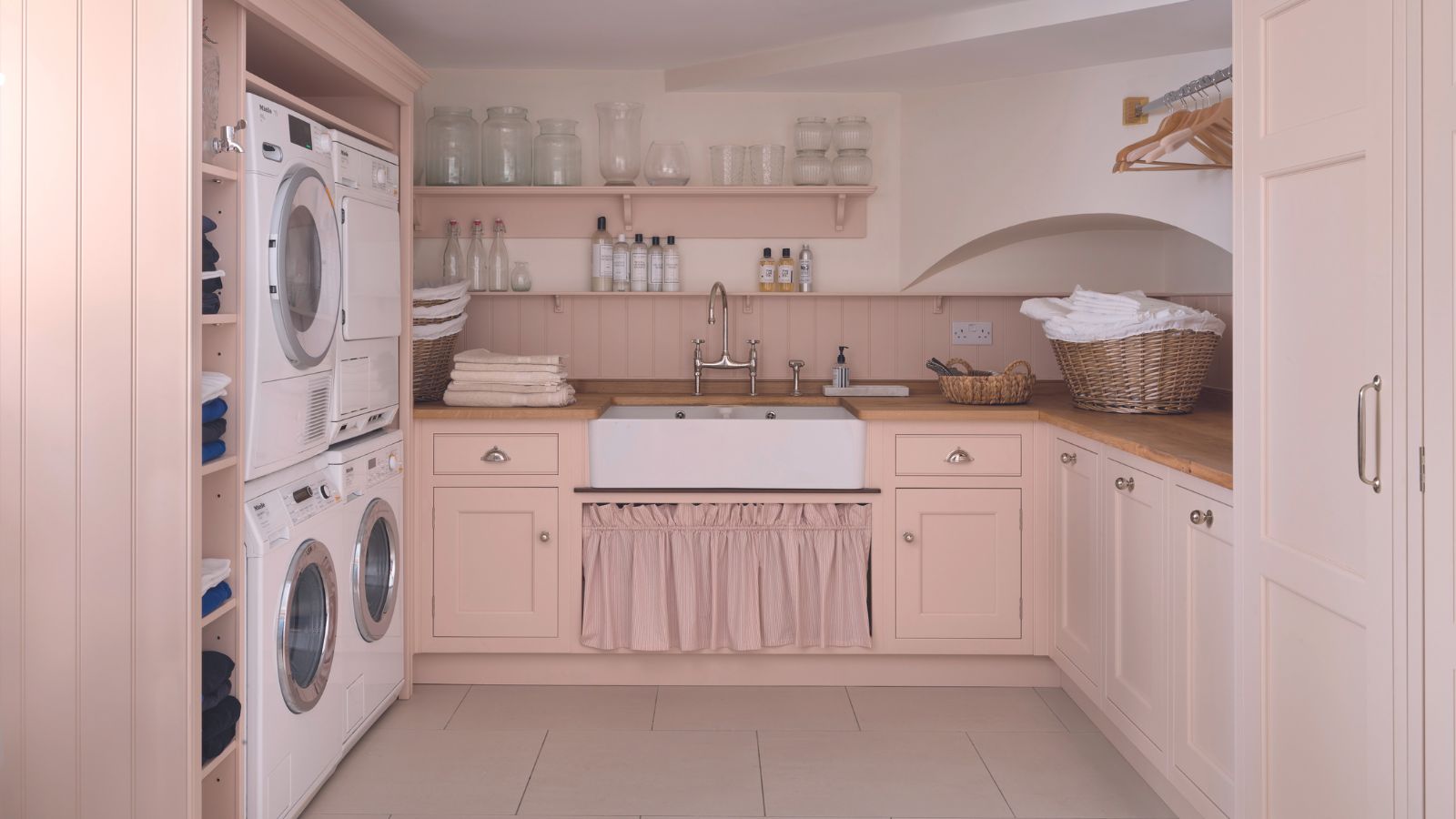
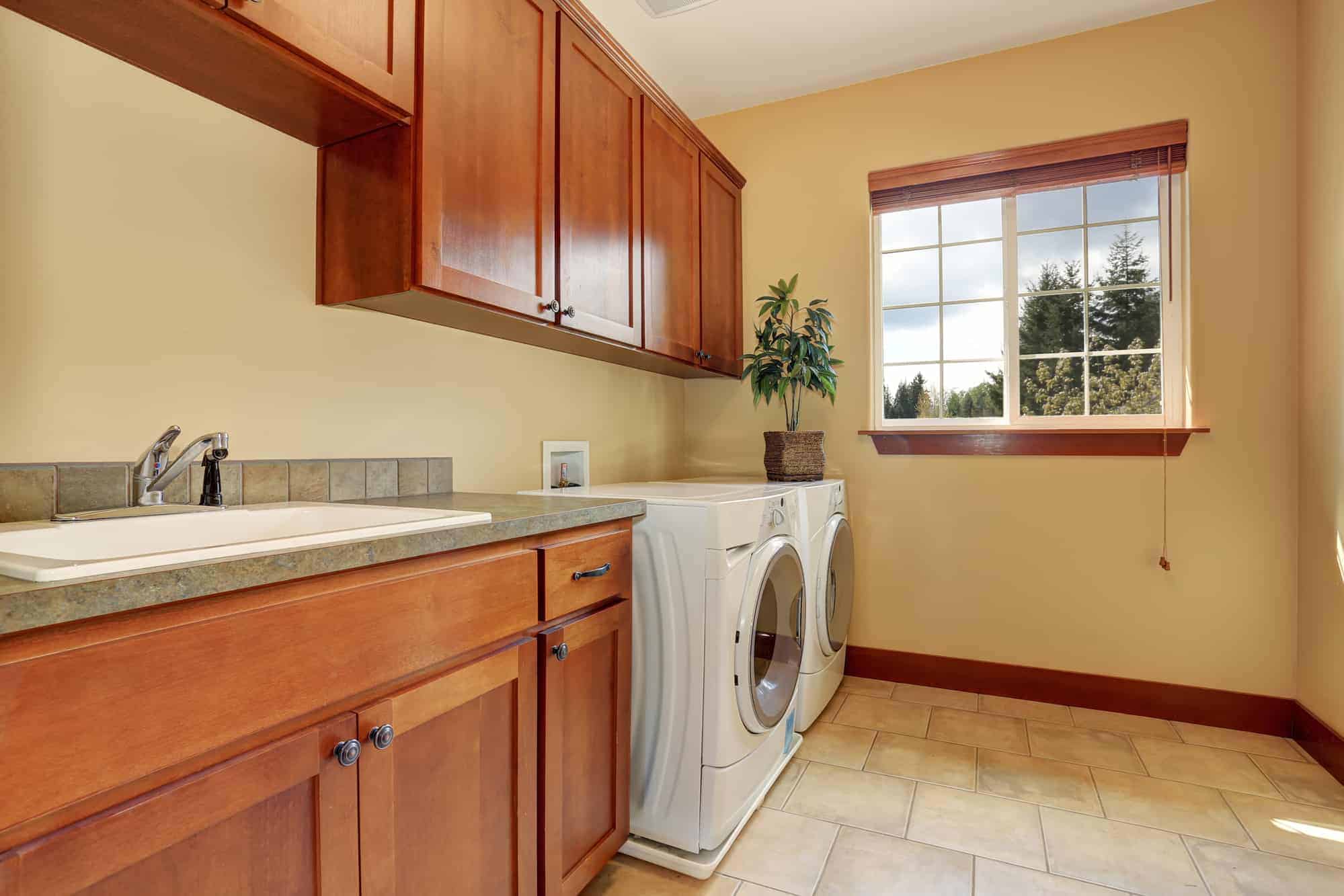
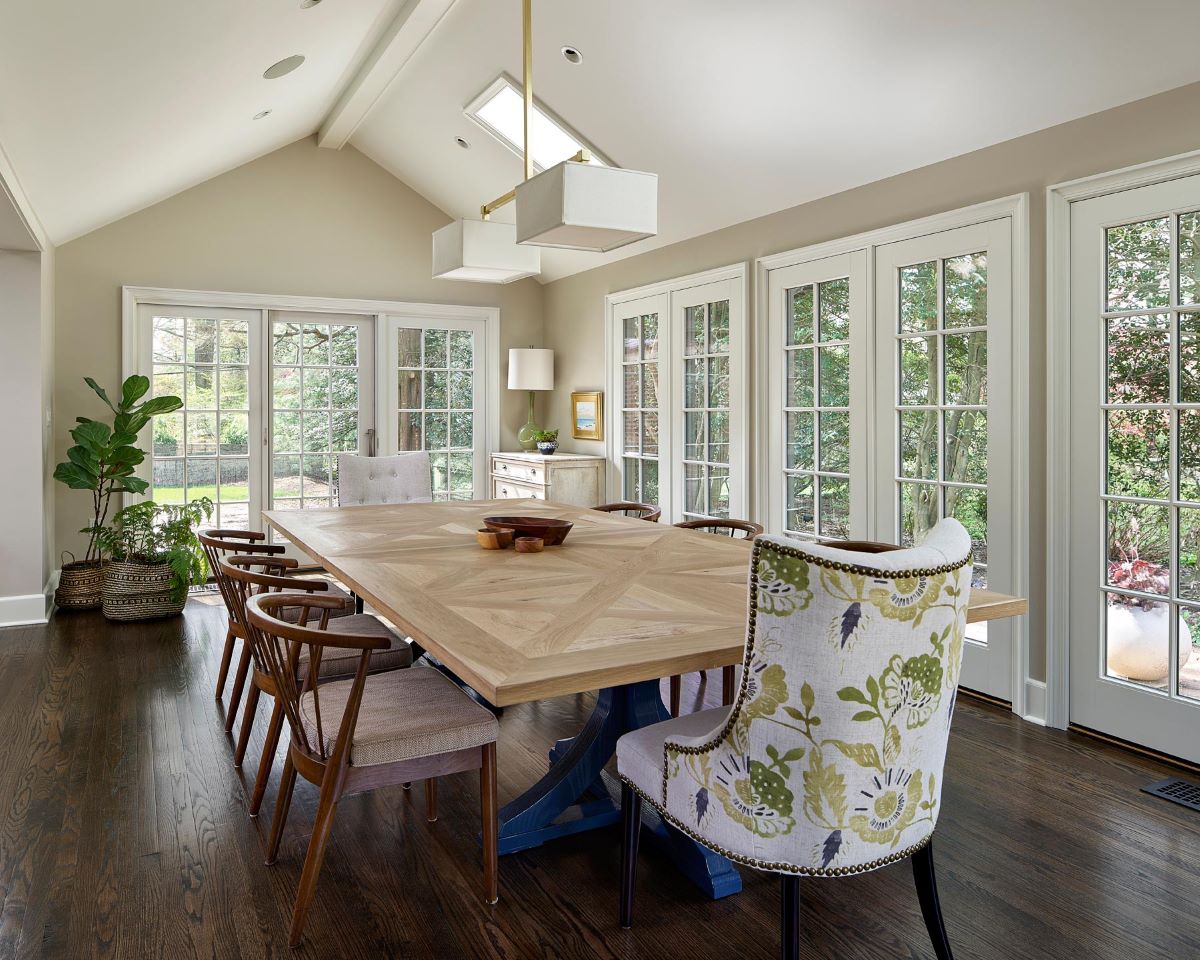
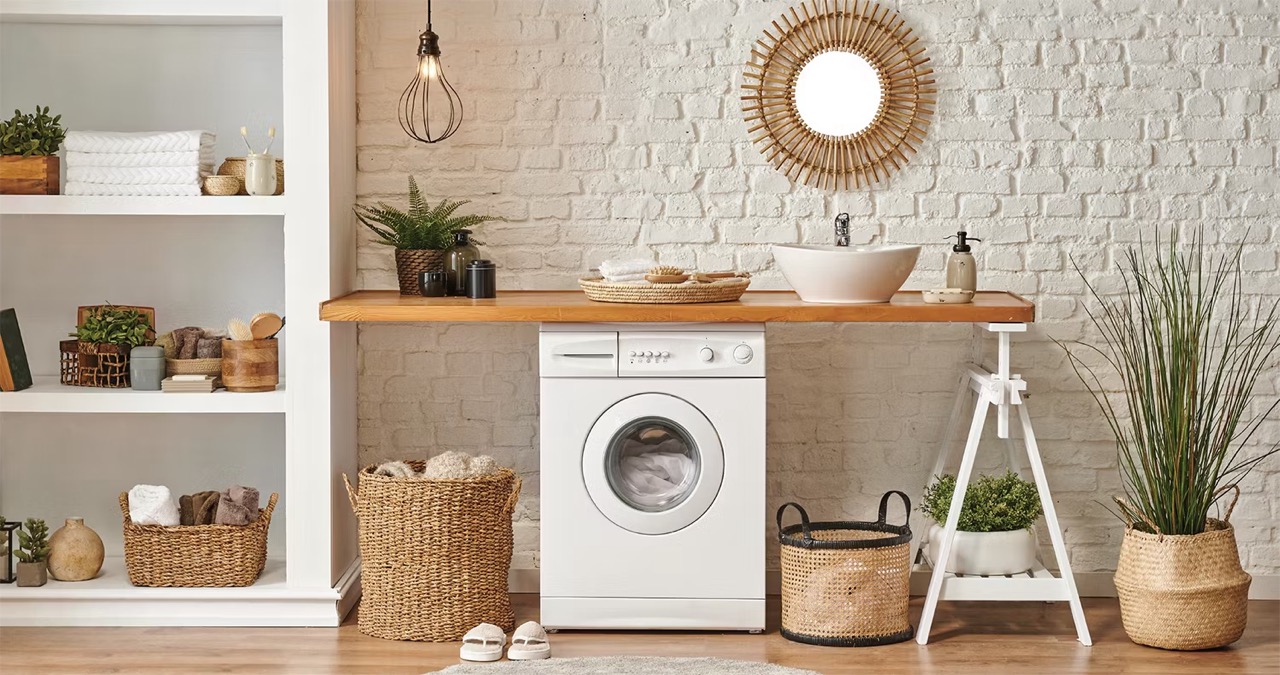
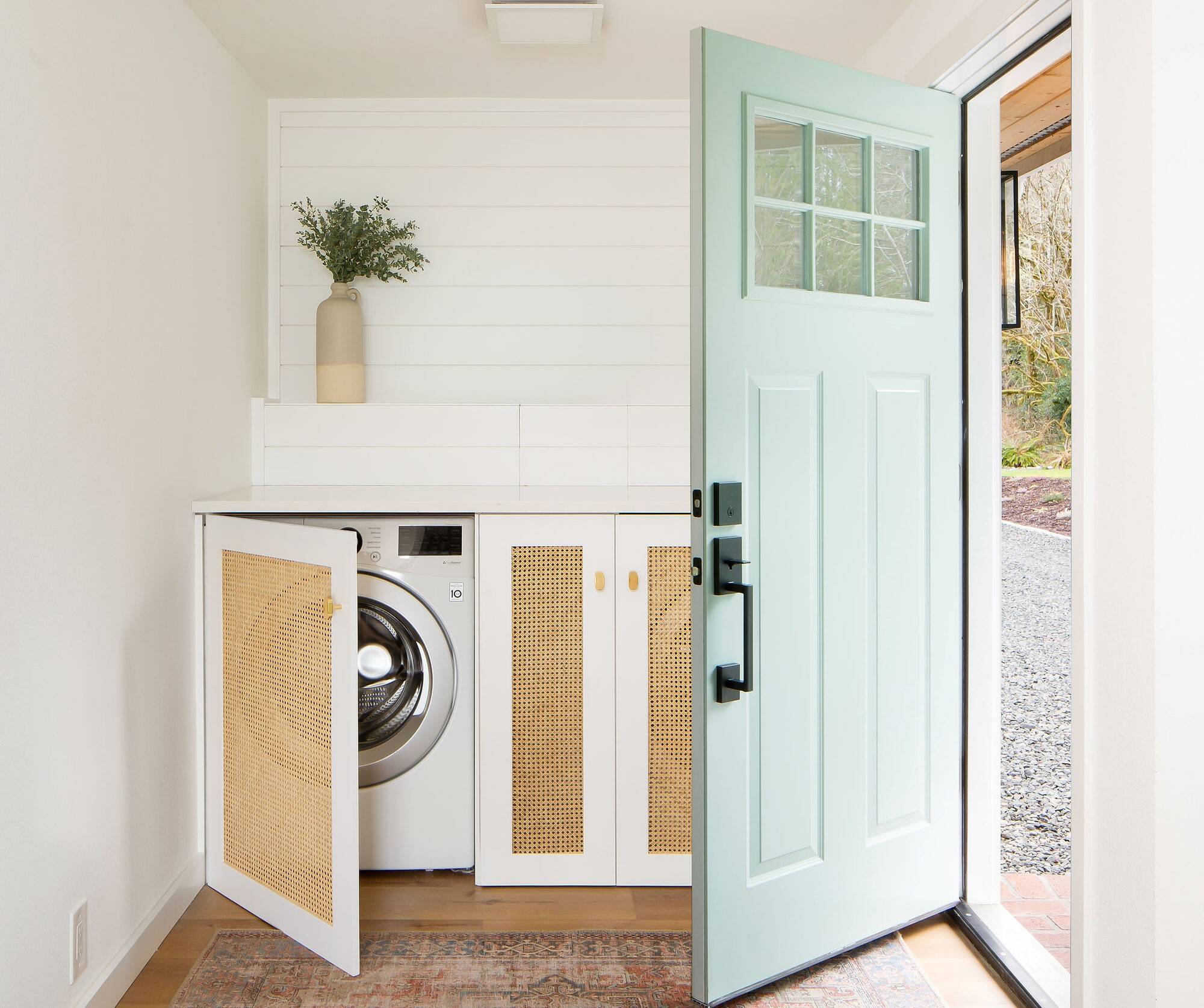
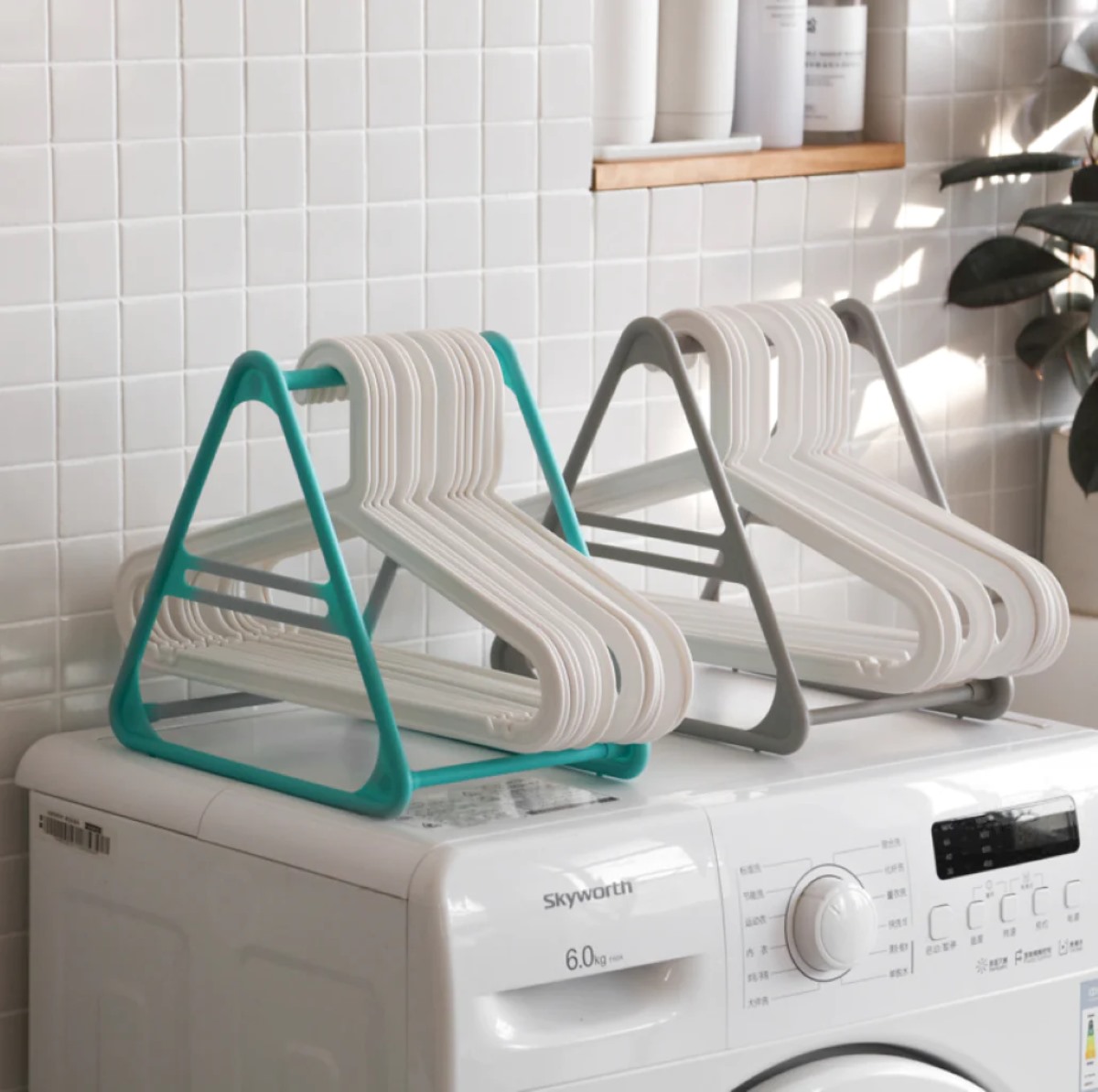
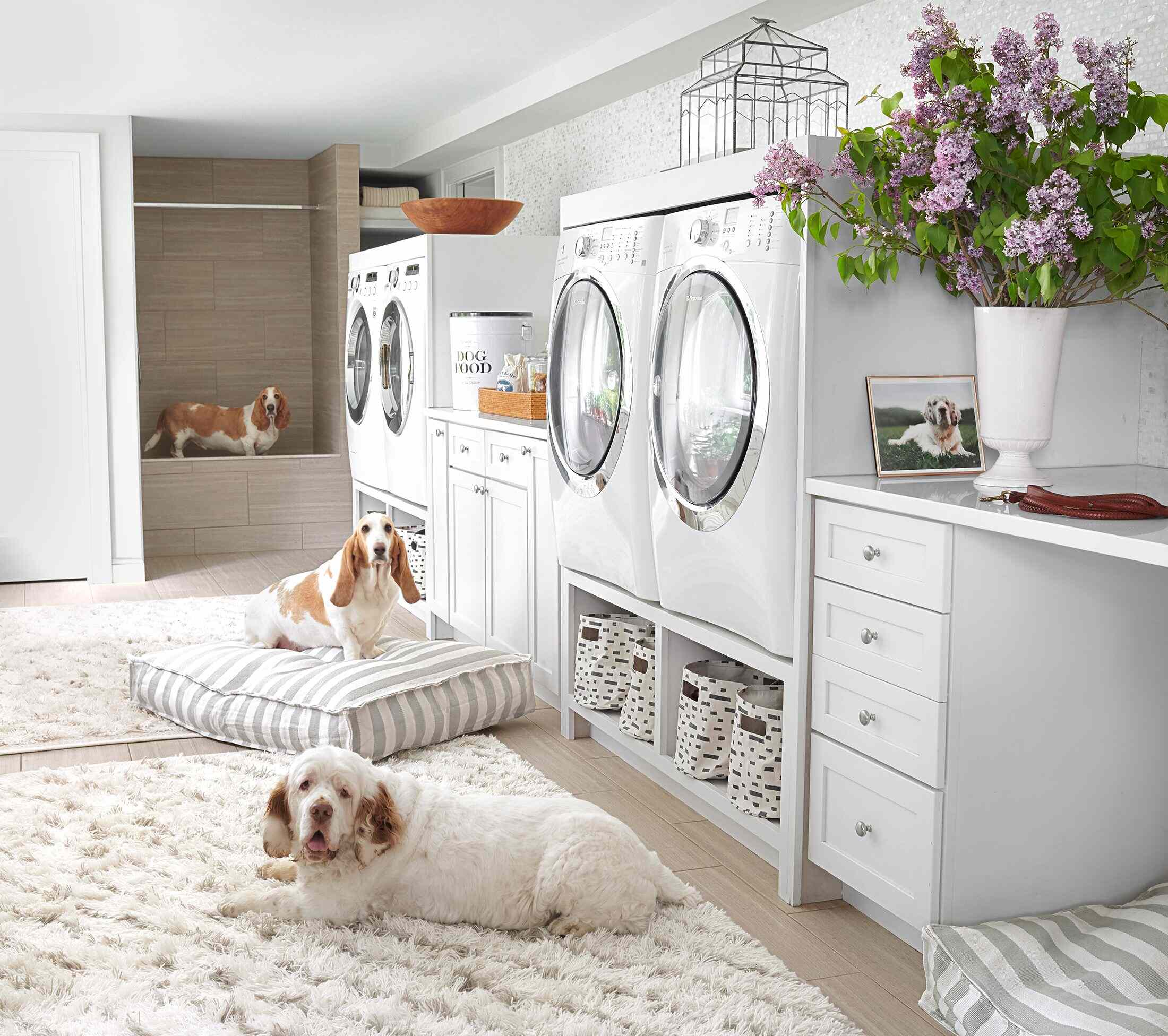
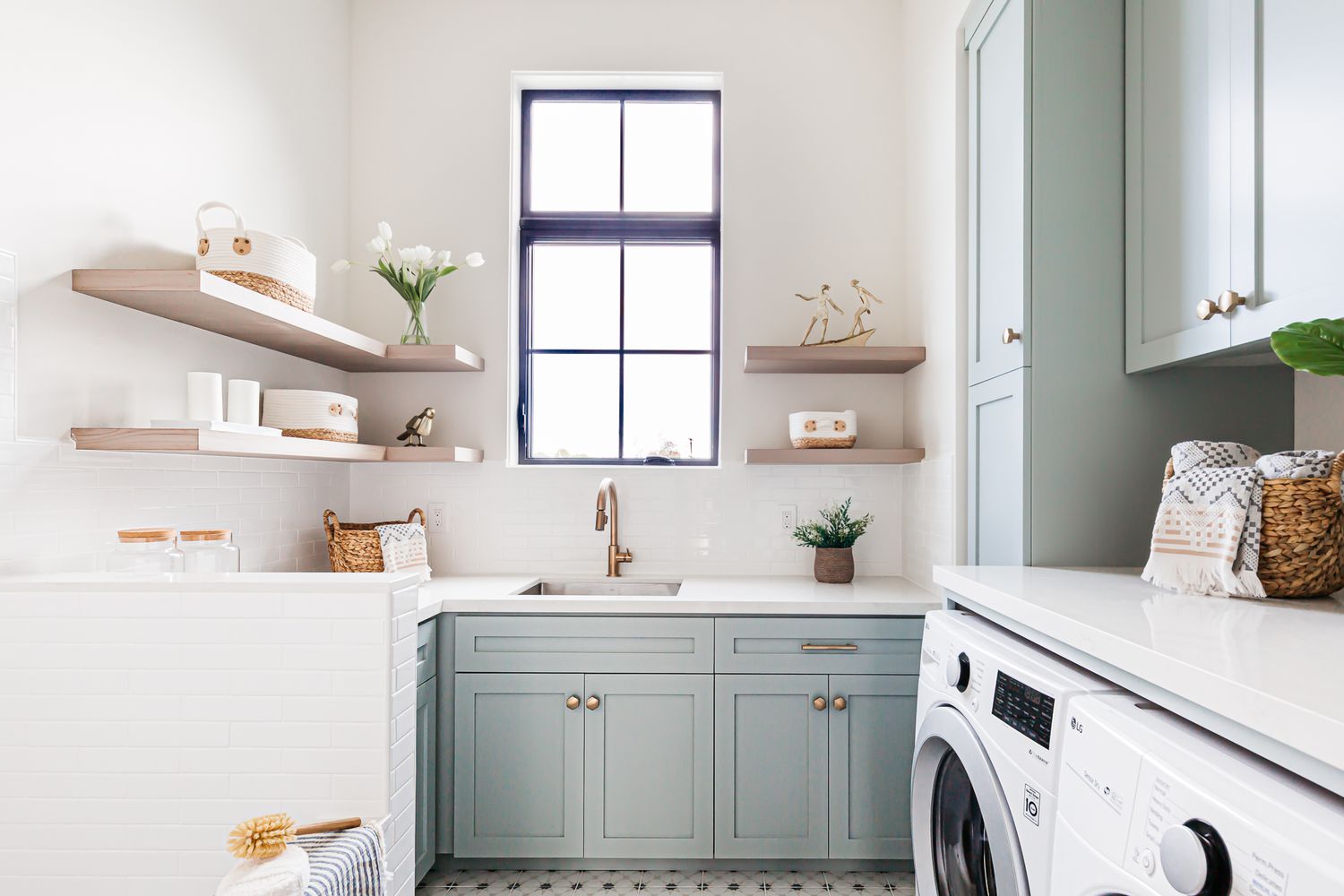
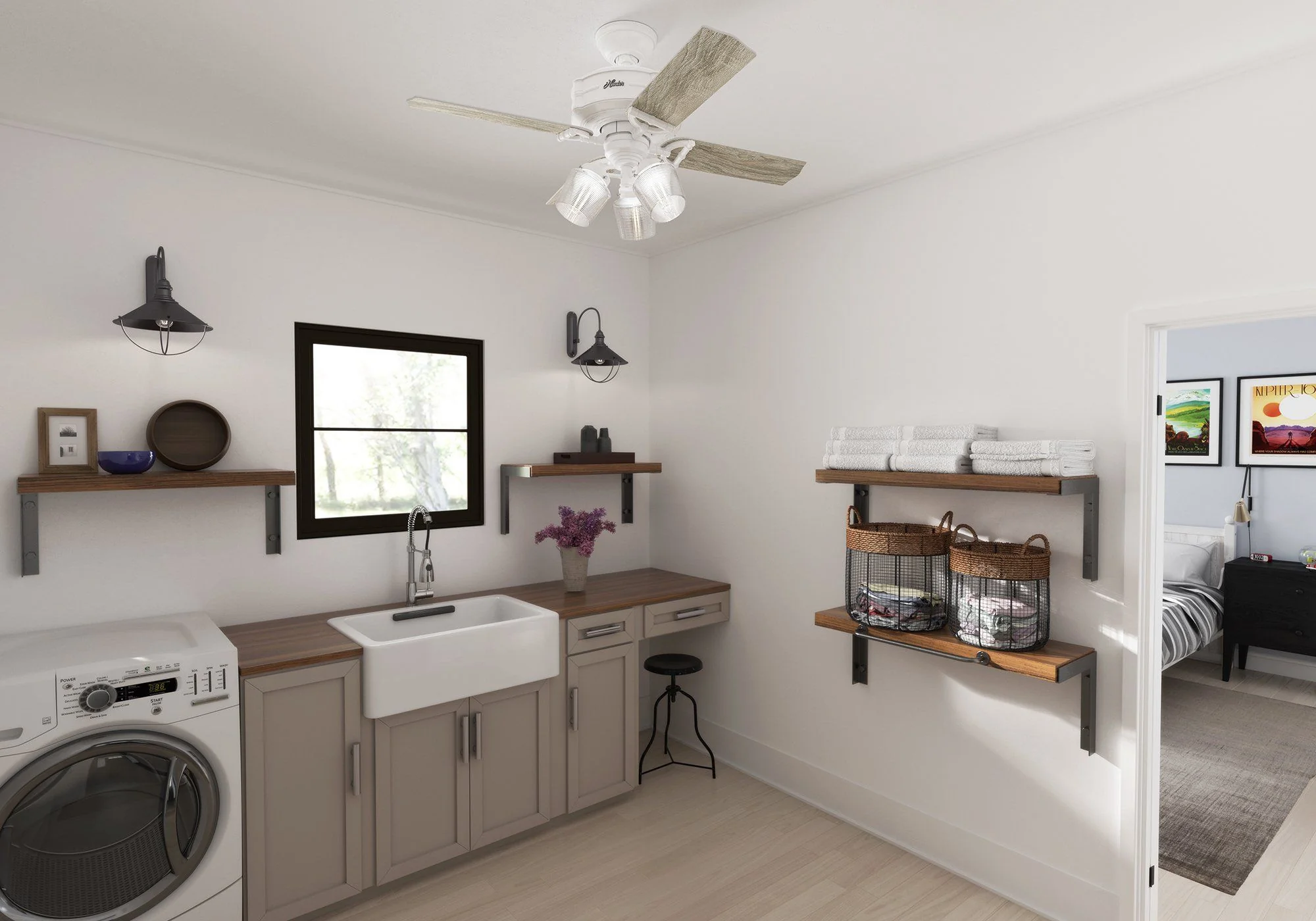
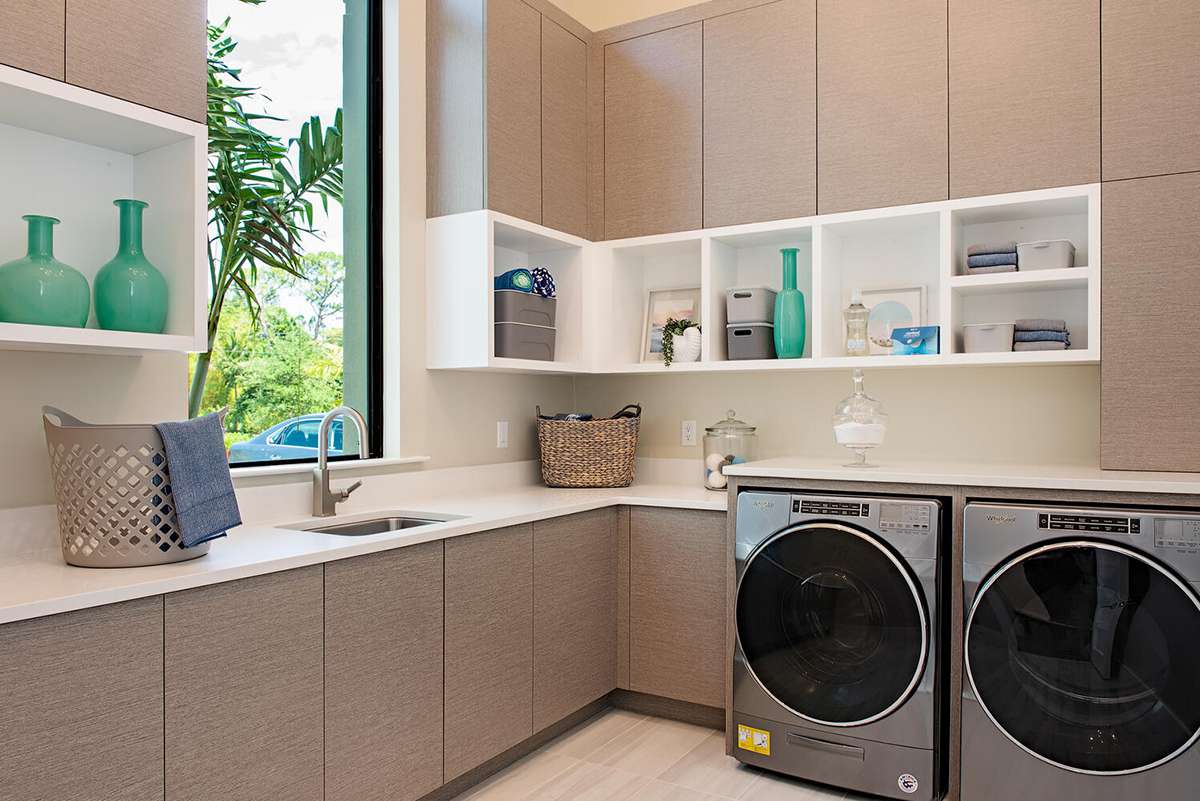
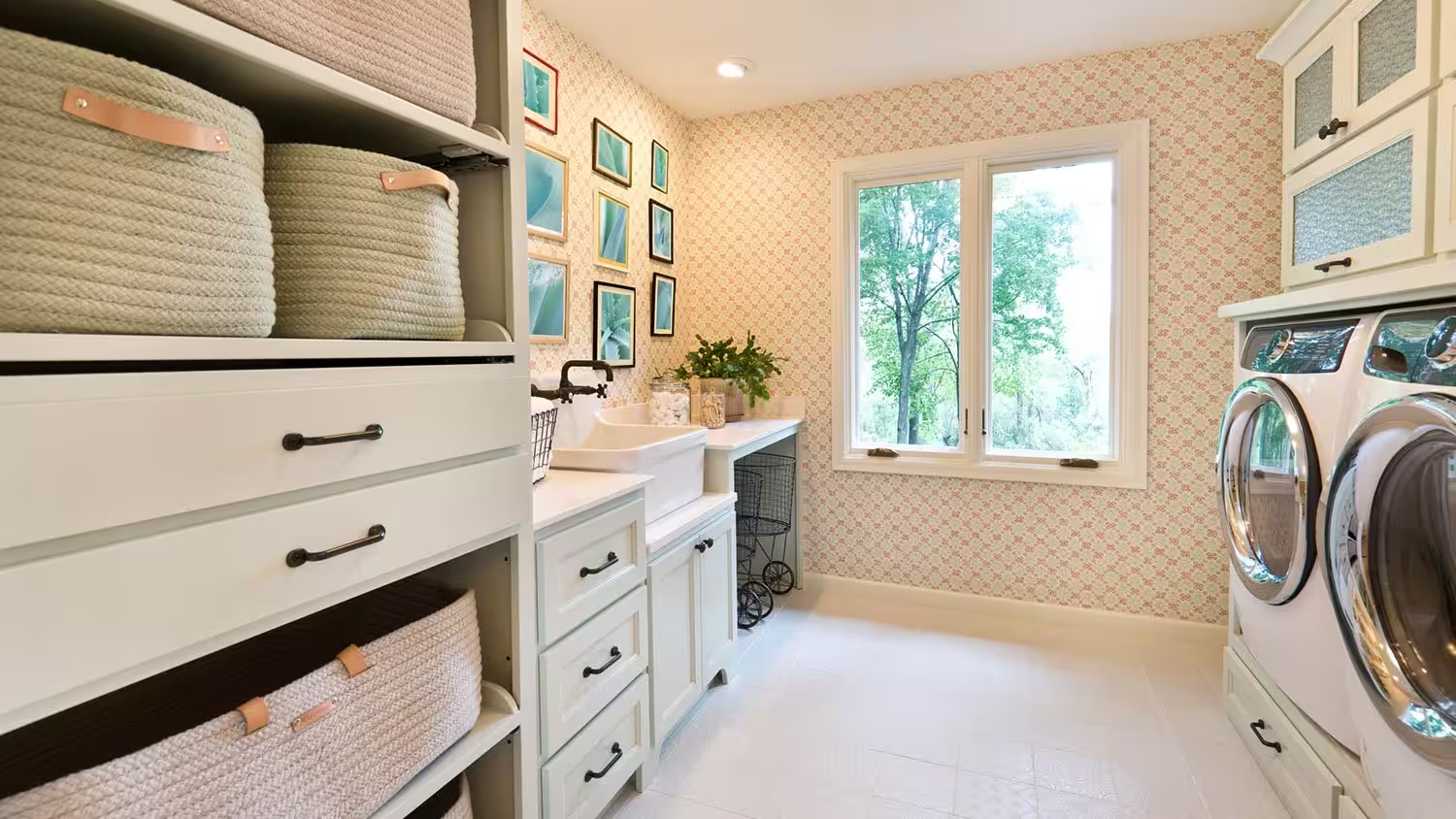

0 thoughts on “How Much To Add A Laundry Room”